The Regulation Of Trout
Introduction
The context that currently applies to the regulation of trout in this country is one of revolutionary change. I say so because the mind-set and vision that informs decisions around trout today cannot be more different than that which applied say 30 years ago.
- 30 years ago trout were a protected species enjoying significant government support.
- Now in law at least they are condemned as invasive aliens and must either be eradicated or controlled for that purpose.
Click here for the full article.
“Chalk Stream Fly Fishing: A 21st Century Anthology” Reviewed
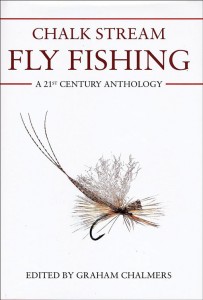 Former South African lawyer turned UK based publisher and chalk stream fly fisherman, Graham Chalmers, has crafted a what in British fly fishing circles, is already a highly regarded and much talked about book. Gathering together some of the abundant wisdom that can be found in the membership of the Salisbury and District Angling Club he has produced a superb anthology about chalk stream fly fishing. This is no effete panegyric to dry fly fishing by the upstream method (there are even chapters on nymphing and coarse fish) but instead thoroughly modern and robust look at what chalk stream fly fishing is today, how it got there and its future. Twelve club members write engagingly on the full gamut of this subject from climate change all the way through to leader construction. Many of them are famous in fly fishing circles. Gordon Mackie is featured as is Brian Shaw who offers one of the better précis of the smorgasbord of what river fisherman can throw at a trout. Want to get from the beginning of time into the future in terms that identify the great fly designers and what they contributed to the oeuvre? Brian Shaw does it in 26 illustrated pages that include his top six go to flies. For fly tyers that chapter alone makes this book worthwhile. I can go on and in fact many members complain that I do, far to much and at great length. So let me end by saying that this book is not yet available locally though can be ordered on line through Amazon or Coch-Y-Bonddu Books.
Former South African lawyer turned UK based publisher and chalk stream fly fisherman, Graham Chalmers, has crafted a what in British fly fishing circles, is already a highly regarded and much talked about book. Gathering together some of the abundant wisdom that can be found in the membership of the Salisbury and District Angling Club he has produced a superb anthology about chalk stream fly fishing. This is no effete panegyric to dry fly fishing by the upstream method (there are even chapters on nymphing and coarse fish) but instead thoroughly modern and robust look at what chalk stream fly fishing is today, how it got there and its future. Twelve club members write engagingly on the full gamut of this subject from climate change all the way through to leader construction. Many of them are famous in fly fishing circles. Gordon Mackie is featured as is Brian Shaw who offers one of the better précis of the smorgasbord of what river fisherman can throw at a trout. Want to get from the beginning of time into the future in terms that identify the great fly designers and what they contributed to the oeuvre? Brian Shaw does it in 26 illustrated pages that include his top six go to flies. For fly tyers that chapter alone makes this book worthwhile. I can go on and in fact many members complain that I do, far to much and at great length. So let me end by saying that this book is not yet available locally though can be ordered on line through Amazon or Coch-Y-Bonddu Books.
If you are still in doubt and need a little taste of what lies between the covers of this book here is an extract from the introduction written by by Graham Chalmers. I don’t think anyone has covered the great upstream dry fly debate better. It is reproduced with the kind permission of the author.
EXTRACT FROM EDITOR’S INTRODUCTION TO CHALK STREAM FLY FISHING – A 21ST CENTURY ANTHOLOGY
© OUTDOOR MEDIA LIMITED 2012
When I first designed the content of this anthology, I thought to include a detailed chapter on the history of chalk stream fly fishing to serve as a foundation for understanding the ethos so ably expressed by Gordon Mackie. In the end, I decided against it. The topic has received vast treatment in earlier angling literature, in countless magazine articles and most recently in Andrew Herd’s comprehensive history of fly fishing The Fly (reproduced as a new edition in 2011 entitled The History of Fly Fishing). There is one aspect of the history that I must deal with though because it is alluded to by a number of the contributors and that is the perpetually controversial “upstream dry fly only” rule. Nothing causes more heated debate and general trouble amongst chalk stream anglers than this rule and it has done so for about a hundred years. It is in fact two rules, one regulating casting direction and the other regulating what type of fly may be used. These rules are enforced on some chalk stream fisheries, either continuously or at least during the early part of the season. Many fisheries relax the rule specifying “dry fly only” and permit the use of sub-surface nymph patterns from about the 1st July onwards, after the notional end of the mayfly hatch, but you are still required to cast upstream. As far as I know, these rules are only found on English chalk streams and on no other fisheries anywhere in the world and they are somewhat mystifying to other fly fishermen. They simply cannot be understood in a historical vacuum.
To leap nimbly over several thousand years of fly fishing history to arrive at a convenient starting point, let me just say this: before the modern era, fly fishing was done differently to how we do it now. A long, heavy, solid rod was used; a fixed length of line, usually made of braided horsehair and roughly the same length as the rod, was attached to the rod tip; a fly, consisting of a hook with a body of some or other natural material and feather wings, was attached to the end of the line; the angler cast as best he could, usually downstream and with a careful eye to the wind, to fish that were very close by modern standards (probably ten yards or less); the fly fished on the surface or just beneath it; a fly was a fly and there was no concept of “a dry fly” or “a wet fly” – a fly was both, as the circumstances allowed and the fish took it without much regard for whether it was “on” or “in” the water. Casting upstream had particular problems because the only way the line could be shortened as the fly came downstream towards the angler was to raise the rod. This made striking a fish difficult and the method was not popular. This angling technique, or something very like it, persisted from time immemorial until the 19th century, when several remarkable technological innovations took place, the most important of which were the invention of the tapered silk fly line and the split-cane fly rod. The fly line could now be cast exactly as we do it today and once anglers had figured out how to make the fly line float, modern fly fishing had arrived, along with a differentiation between flies that were specifically designed to float (modern dry flies) and those that were not. It was against this backdrop of a very short history of modern fly fishing that Frederick Halford strode onto the scene in the late 19th century.
It is not possible to do justice to Halford’s contribution to fly fishing in a single paragraph because that contribution was mighty indeed. For our purposes though, his contribution can be distilled into two material elements. Firstly, although he neither invented modern dry flies nor invented the upstream method of their presentation, he designed a series of small imitative dry flies that could be used effectively all season long in contrast with earlier dry fly patterns which, through their bulky construction, were only suitable for use during hatches of large insects like the mayfly. Secondly, he proposed that the most effective and pleasing way of catching trout on a fly in a chalk stream was to find a rising fish, observe what natural flies were hatching, select a dry fly that matched the natural precisely and then present it to an unsuspecting quarry by means of an upstream cast delivered in such a way as to ensure the fly drifted back over the fish in the most natural manner possible. He presented these views in his writing as a set of prescriptive rules designed to define fly fishing on chalk streams, which was audacious at a time when a wide range of methods were in common use. Others took it even further by devising a distinction between the “purist” and “ultra-purist” dry fly schools. Halford, at least initially, happily contemplated casting a dry fly to non-rising fish if the occasion arose, but “ultra-purists” limited themselves to rising fish only and must have often found themselves sitting idle on the river bank enthralled by the intransigence of their own narrow minds. Halford’s influence as a writer was enormous and had truly global reach. His name became synonymous with chalk streams and adherence to his views gained great momentum, until those who counted themselves as members of the purist dry fly school had the premium trout waters in a complete stranglehold. It is here that the trouble started in earnest because the purist school began to legislate for their method only and outlawed all other methods. Their reasons for doing so have been the subject of fierce debate ever since and the situation has been exacerbated by a particularly infuriating bit of spin indulged in by members of the purist school from time to time and that is to suggest that fishing the upstream dry fly, a method that is relatively easy and is devastatingly effective on rising fish, is in fact more “sporting” and therefore, by implication, more difficult or more noble than other methods.
It is important at this point to distinguish between the upper and lower reaches of the chalk streams. Brown trout, historically the principal target of the chalk stream fly fisherman, predominate in the upper reaches along with grayling. The lower reaches are a more diverse habitat and are occupied by a wide range of fish species, including trout. It was the premium trout waters of the upper reaches that the purist dry fly school set about capturing as the exclusive preserve of the upstream dry fly method. They were not interested in the lower reaches which, to this day, entertain anglers from all freshwater angling disciplines in relative harmony. By stipulating upstream dry fly only on the upper reaches, the purist school necessarily excluded all forms of angling that are designated as “coarse”, meaning anything that is not fly fishing. Nobody has a problem with this, not even the coarse anglers. The upper reaches are exceptionally suitable for fly fishing and it is generally considered appropriate that they be exclusively reserved for this type of angling. The problem was rather within the ranks of the fly fishing fraternity itself because the upstream dry fly only rule also swept away the time honoured and popular downstream wet fly technique, a method that involves moving steadily downstream repeatedly casting so as to cover the water with a wet fly (or team of wet flies) swung across the current. The principal argument advanced by the purist school in support of banning downstream wet fly fishing was that the method is very disruptive of the water. In the context of a chalk stream with its smooth flows and clear water, this is undoubtedly correct and the method would irredeemably prejudice the prospects of any other angler who might follow the wet fly fisherman. It is important to note though that the disruption is caused by the act of repeated casting and possibly also by the sweeping of the fly line and flies across the current and not by the simple fact that the flies are wet flies as opposed to dry flies.
The elimination of the classic wet fly method (and with it classic wet fly patterns, no matter how they were fished) from premium chalk stream fisheries eventually achieved more or less universal acceptance. That would have been that, had it not been for the intervention of G .E. M. Skues in the early 20th century. Skues, who achieved great fame as an angling writer, solved a problem that much puzzled chalk stream fly fisherman of the day. That problem was the phenomenon of “bulging” fish – a rise form caused by a fish taking a nymph just beneath the surface and creating a hump-like disturbance in the process. Dry fly fishermen quickly learnt that bulging fish could seldom be taken on a dry fly and as the classic wet fly method had been banned for being too disruptive, the purist school strangely leapt to the conclusion that such fish were uncatchable. It just simply didn’t occur to them that there might be some other method of fly fishing outside of the conventional dry fly and wet fly methods that might succeed. But it did occur to Skues, who proceeded to more or less invent modern upstream nymph fishing and then wrote a book about it. There was instant controversy because Skues’ new nymphing method contravened the upstream dry fly only rule then universally and continuously in force on most premium fisheries. The stage was set for an extraordinarily bitter and protracted dispute that has still not been fully resolved.
The new nymphing school argued that, self-evidently, the criticisms levelled at downstream wet-fly fishing could not logically be applied to fishing sub-surface nymph patterns with an upstream cast in exactly the same way that a dry fly is fished, with the only difference being that the fly sank rather than floated. But the dry-fly purists set their minds against this compelling proposition with a stubborn refusal to accept the distinction between nymphs and traditional wet flies and a mistaken conclusion that it is unsporting or even harmful to fish sunken flies on a chalk stream in any circumstances. Although the debate ebbed and flowed over the decades, the purists were eventually overcome, their hegemony of the chalk streams was broken and upstream nymph fishing became an accepted chalk stream method. However, the purists retreated with extremely bad grace and so slowly that today there are still fisheries that insist upon upstream dry fly only for some or all of the season, although these days this is more likely to be motivated by a desire to alleviate fishing pressure on hard fished waters coupled to an apprehensive conservativism, rather than by quasi-religious ethical convictions.
I know it is difficult to walk away from a fight when logic is offended and passions have been unreasonably inflamed, but to my mind continuing this debate in the 21st century overlooks an important point. With the passage of time, these quaintly anachronistic rules have become a distinctive tradition that partly defines what chalk stream fly fishing is and how it is distinguished from other types of fly fishing. Nobody else, anywhere in the world, could credibly introduce rules like this today without them seeming to be an affectation. Chalk stream fly fishermen should thus revel in the distinction conferred upon them by an iconic history and in honouring that history, should happily observe the traditional rules where these are still in force. It is just the way this very English game is played – like bowling with a straight arm in cricket or wearing white at Wimbledon. Believe me, everybody else is jealous as hell and it is great fun teasing other types of fly fishermen by adopting a posture of implied superiority and spouting irritating aphorisms like “it’s not how many, but how, that counts”.
Trying to make sense of the National Environmental Management: Biodiversity Act
Though many do not know it, millions of trout bass and carp fisherman woke up on Saturday 20 July 2013 potential criminals, liable should they ever catch trout bass or carp again, to a fine of up to ten million and a period of imprisonment of up to ten years. Thousands of people whose livelihood depends on the fact that these millions of South African’s enjoy fishing for trout, bass and also carp woke up to find that what they do for a living is a either under threat or in some cases a criminal offence. This is because the previous day the Minister of Water and Environmental Affairs listed trout, carp and bass as invasive and alien species in terms of the National Environmental Management: Biodiversity Act.
This was done without regard to, or even consultation with, the millions of South Africans referred to above. Similarly no regard was had to the fact the economies of some areas in South Africa are heavily if not entirely dependent on those millions of South Africans who regard fishing as vital to their happiness and wellbeing, or to the billions that have been invested and are being earned on account of this.
The purpose of this article is to try and make sense of all of this and hopefully show where the Minister of Water and Environmental affairs went wrong and what can be done to redress the situation.
Section 24 of the Constitution entitles everyone to an environment that is not harmful to their health or well-being and to have the environment protected for the benefit of present and future generations through reasonable legislative and other measures that prevent pollution and ecological degradation, promote conservation and secure ecologically sustainable development and use of natural resources while promoting justifiable economic and social development.
Current legislative controls are to be found in a raft of existing bylaws, provincial and national legislation and the framework of national laws that have been specifically enacted to give effect to this constitutional right and which fall under the umbrella legislation that is the National Environmental Management Act or NEMA. One of these laws is the National Environmental Management: Biodiversity Act or the NEM:BA.
The purpose of the NEM:BA is summarised in the preamble of the Act as being to provide for the management and conservation of South Africa’s biodiversity within the framework of the National Environmental Management Act. Biodiversity is a rather loosely defined concept but in essence is built around the idea that that as far as indigenous species are concerned, the more the merrier. The NEM:BA contemplates that this will be achieved in large part by protecting indigenous species by controlling listed invasive and alien species and protecting indigenous ones through a managed strategy aimed, at amongst other things, eradicating listed alien and invasive species.
An alien species is defined as any species that was introduced into South Africa by man. Cattle (which were introduced into South Africa thousands of years ago by nomadic herders) would be alien had the Minister not exempted all alien species that are already in South Africa unless they have been listed as invasive. Thus cattle, sheep, maize and much of which we take for granted as essential to our everyday life is only allowed in terms of this act under sufferance on account of a ministerial exemption.
Trout, bass and carp are not so lucky even though they were introduced into this country over one hundred years ago. They are regarded as invasive. Invasive is defined under the NEM:BA as species that threaten ecosystems, habitats or other species or have demonstrable potential to threaten ecosystems, habitats or other species and may result in economic or environmental harm or harm to human health. It is hard to see how trout, for example, can be regarded as threatening ecosystems, habitats or other species throughout South Africa, given that they can only in a very small part of South Africa and that in those areas they in most cases exist in balance with the ecosystems they inhabit. Quite how trout, bass and carp threaten human health or result in economic harm is also hard to determine. It seems that the Department of Water and Environmental Affairs takes the view that this is given once it can be shown that they threaten an indigenous species.
The fact is that trout, bass and carp are now subject to control. Control means eradication. It does not matter that this may be well-nigh impossible, or that the only invasive species that has been successfully eradicated in this country is a snail that was found in Cape Town harbour. Government must in whatever way it can bend itself to this task.
The fact that control means eradication is important. Much has been said and written in fresh water fishing circles about plans to allow the propagation and exploitation trout, bass and carp to continue in certain demarcated areas. Indeed the NEM:BA was amended only a week after they were proclaimed as invasive and alien species to allow this to be done. However such demarcation is not possible once a species has been listed nationally as invasive and alien as is the case with trout, bass and carp. The NEM:BA is very clear on this. Invasive and alien species are subject to control under the NEM:BA. Control is harshly defined under the NEM:BA to mean to combat or eradicate an alien or invasive species or where such eradication is not possible, to prevent, as far as may be practicable, the recurrence, re-establishment, re-growth, multiplication, propagation, regeneration or spreading of an alien or invasive species.
This requirement that invasive species must be controlled with a view to bringing about their ultimate eradication is one of the foundations on which the NEM:BA is built. Section 75 which deals specifically with control refers to control and eradication as being one and the same. The language of the section is peremptory.
The NEM:BA does now contain provisions that allow listed invasive species to be exempted from these controls in demarcated areas. This of course begs the question why it is necessary to list something in an area if it is your intention to then exempt it. The existence of these provisions is furthermore of cold comfort in the here and now as this can only take place after a risk assessment has been carried out. A risk assessment is only possible once the regulations are in place. This will not be for some time.
It is also true that the regulations that were also published on 19 July 2013 differentiate between invasive species listed under 1a and those listed under 1b. These regulations, which as I have pointed out are not yet operational, stipulate that invasive species listed under 1a are subject to compulsory control and those listed under 1b to control in terms of a management control program.
The difference between the two is largely one of priority. Thus, for example, if trout were listed under 1a one would be obliged to take active steps to eradicate them, such as for example poisoning dams or rivers in which they are found. Under 1b one must at the very least not actively promote their continued existence. This means that one cannot allow stocking.
This has serious implications for trout which will die out very quickly in most areas now that stocking has been made illegal. It is less of a problem in the case of bass or carp whose survival is not dependant on constant restocking.
It is now illegal to introduce trout (or bass or carp for that matter) into any South African waters because section 71 read with section 101 of the NEM:BA makes it a criminal offence to carry out a restricted activity in respect of a listed invasive species without a permit. Restricted activities are very widely defined to include having a specimen of a listed invasive species in your possession or under your control. It also includes growing, breeding, transporting, selling or donating them. A specimen is also widely defined to include organisms be they dead or alive.
The definition of restricted activities is so broad that owning a dam stocked with trout is now a crime. So is operating a hatchery or offering fresh or frozen trout for sale. Fishing (or at least catching trout, bass or carp and thereby exercising control over it) is also a crime though some argue this is not the case if you are fishing someone else’s waters and release what you catch. However that argument is a temporary one at best as the regulations also make catch and release a restricted activity. Thus that loophole will also be closed when they come into force.
This is not going to get any better once the regulations are in force because the regulations do not override the NEM:BA and one cannot, therefore, ever justify the continued stocking of a dam with trout under the NEM:BA once they have been listed as invasive. One also cannot operate a trout hatchery for the purpose of restocking dams or rivers. These activities contradict the clear and unambiguous obligation that the Act imposes that where eradication is not possibleone must prevent, as far as may be practicable, the recurrence, re-establishment, re-growth, multiplication, propagation, regeneration or spreading of an alien or invasive species.
Hatcheries that produce trout solely for consumption may get a permit once the regulations are in force, but only if they can show that their trout cannot escape.
This is no doubt why gum and wattle trees have not been listed as invasive species even though they clearly are. Gum and wattle trees are controlled in terms of the Conservation of Agricultural Resources Act or (CARA). The CARA adopts a much more nuanced approach that allows for the continued exploitation of invasive species that are economically valuable. Listing gum trees and wattle trees under the NEM:BA will make it a criminal offence to propagate, harvest, transport or to sell products containing unprocessed gum or wattle which would destroy the billions that have been invested and the billions that are earned from these activities.
Unfortunately the Department of Water and Environmental Affairs does not recognise the economic value of trout, bass and carp.
One cannot underestimate the economic impacts of listing trout, for example, as an invasive species. The viability of most of the fly fishing tourism industry is destroyed once you make it a crime to stock waters with trout. That is now the case. Every owner or operator of trout fishing waters must ask; Do I risk a ten year jail term and stock, or do I go out of business? Every owner or operator trout hatchery that supplies trout for stocking purposes must also ask the same question. There can be no doubt listing of trout will destroy a large part of the value of properties exploited largely having regard their fishing potential. Many parts of South Africa will lose a lot if not all of what makes them attractive as tourism destinations. Thousands of jobs will be lost.
It is not just trout. Any business that supplies the needs of the trout, bass or carp fisherman is also arguably an accomplice to the crime of fishing for these species. So too are the banks and other financial institutions that finance these activities and indeed any authority that issues a permit otherwise than under the NEM:BA.
So how did this extraordinary situation come about? I have not met anyone who can explain it to me. The best answer I have got is that the Department of Water and Environmental affairs did this deliberately, and knowing of the consequences. Suggestions that they should reconsider given that the NEM:BA has since been amended to, for example, allow species to be declared invasive in a specified area have been met with derision, even contempt.
Ideally, economically important species that are invasive or have that potential should be dealt with in a manner balances that invasiveness against the economic benefits. The NEM:BA as it has been amended allows for this. Unfortunately the Department of Water and Environmental Affairs seems incapable of striking that balance. Perhaps given this, Government should consider placing control of economically important species under the control of the Department of Agriculture and the CARA. After all this is what has been done with gum trees and wattle.
And I think in this debate lies the weakness that is the law’s undoing. The Department of Water and Environmental Affairs has very obviously failed to strike the balance between environmental needs and the obligation under the NEMA to place people and their needs at the forefront of its concern, and serve their physical, psychological, developmental, cultural and social interests equitably.
This has patently not been done. There is nothing reasonable in a law that overnight criminalises previously legitimate activity of the magnitude that is the fresh water fishing industry that is sustained by trout, bass and carp fishing. It is excessive especially since the mechanisms for a much more balanced and reasonable approach were on the law books a week after the lists were proclaimed.
The fact that these lists were published before the Act was amended to allow a more reasonable approach begs the question why? Why did the Department of Water and Environmental Affairs not wait and deal with trout, bass and carp on a case by case basis and in a way that ameliorates the adverse economic and social impacts that must flow from this decision? Thus far it has not been able to proffer any cogent answer to this question.
There is another problem that the Department of Water and Environmental Affairs cannot overcome. You see the NEM:BA requires the Minister notify the public of these lists giving them a period of time within which to object. This she did not do. On the contrary there was no consultation. The lists and regulations were kept confidential until the last moment. The result is that very few people have any idea at all what has happened.
Regrettably none of this alters the situation that pertains at present. Trout, bass and carp fishing have been criminalised with immediate effect. If this is not opposed the right of every human being under the Constitution and NEMA that environmental laws should place place people and their needs at the forefront of its concern will be lost.
So what can we do about it? I have already said the solution lies in adopting the balanced approach required by the NEMA. This would require trout, bass and carp to be immediately delisted, to be reconsidered at a later date on a localised basis and once the economic impacts of a listing have been determined. Alternatively trout, bass and carp could be placed under the Department of Agriculture and CARA.
The Federation of South African Flyfishers has been suggesting both alternatives for years but has been ignored. It is thus very unlikely that the Minister is going to change her mind now. This means that we are going to have to oppose this law. We need to do so in the courts and in public. We must accept that no one will look after our interests but ourselves. In order to achieve this, trout, bass and carp fisherman and businesses and other stakeholders whose livelihoods depend on fishing for trout, bass and carp will need to work together.
I think this can and must be done.
DFT Members Teaching The Tendele Fly Fishers
Several members of the Durban Fly Tyers spent the weekend at Kamberg teaching the Tendele Fly Fishers the rudiments of fly tying. Tendele Fly Fishers is a community outreach project run by the KZN Fly Fishing Association (KZNFFA) and spearheaded on the ground by Richard Khumalo.
What made the event extra special was Jay Smit’s (J Vice) donation of 10 Tendele Training Vices. This is a new, inexpensive fly tying vice dreamed up by Jay Smit for the occasion. It is very good indeed.
Cape Vidal
Friday saw 6 DFT fly fishermen climb out of bed at 4am in pouring rain and howling wind to make the 320km drive to Cape Vidal to lay claim to the kingfish that frequent the area at this time of year. The weather reports were not good but we were confident it wouldn’t be as bad as they made it out to be.
I picked up Steve and headed to the first rendezvous point to meet the rest of the gang and travel up in convoy. At about 5:30 we were all together; Steve, Neill, Bruce, Joe, Graham and I. And after a quick cup of coffee we were on our way.
This trip seemed to be missing something. There was no mocking and no bullshitting, and then it dawned on me, Warren had opted to stay at home in fear of missing the birth of his child that was due later in the month.
We arrived at the Whipme in St. Lucia where our fears were confirmed. The wind was howling, close to 40km/h, and it was pouring with rain. Nevertheless we scoffed down our breakfasts and headed to the beach.
Once on the beach we knew that conditions for fly fishing were far from ideal. I kitted up my 5wt and 9wt and made my way out onto the reef whilst Neill, Joe and Graham walked north on the beach in search of holes. After a few attempts at casting my 5wt straight into the wind I decided to change tactics and use the T-50 9wt. What a machine! I was now effortlessly casting full lines with minimum effort. Bruce then joined me at the end of the reef were we both slogged the water while Steve worked the water up along the reef’s drop-off.
Things were rather dismal with only a kingie, needle scale queenfish, stone bream and a handful of moonies and wavies coming out for the session. We booked in at around lunch time, had a few beers, discussed tactics and then headed back down to fish the incoming tide for the late afternoon. By now the wind had dropped to a gale and it was now slightly fishable.
We were all huddled in the corner of the bay with the wind behind us. The water was looked like a washing machine with the incoming tide meeting the intense side wash and creating prime kingie territory. A few moments later the water was boiling as bait fish scrambled to get away from the predators beneath. We were throwing all sorts of flies into the mayhem but sadly to no avail.
Finally, with the full tide, things calmed down and everyone left except for Bruce and I who stayed to fish into the evening. By this time the moonies had moved into the bay for protection, which was good fun on my Xplorer Guide II 5wt. Finally, at about 18:30, we could hear Charles beckoning and called it a day.
That evening saw us braaiing in the rain where Steve made a machine of a fire to combat the amount of water falling from the sky. We had a relaxed evening (with copious amounts of rum and whiskey) while talking large amounts of bullshit.
Saturday morning was slightly better in that there was no longer any rain, but the wind still was blowing. Steve got up before sunrise and made his way onto the beach. This seemed to be the right move. The bait fish again had the water boiling. Steve was fishing ideal “big fish” flies on his 12wt and it paid off! He got into three decent sized kingies, one of which smashed him off on the bricks. Thankfully two were landed and photographed before being released to fight another day.
The rest of the gang slowly appeared from the night before (complete with packed lunches) with Bruce heading South and Neill and Joe going north. Graham and I meanwhile waited for the water to drop so we could head out onto the reef again.
After producing nothing I too walked north fishing the very limited holes along the way. Again only (damn) moonies were coming out and I was yet to catch a wave garrick. Steve however, smiling ear to ear, went back to the cottage to catch up on a few winks.
By lunch time I had thrown in the towel and returned to the cottage for a quick bite and to tie up some flies for the following morning. Bruce, Neill and Joe returned a little later with a very bleak looking Bruce. When asked what’s wrong he showed us half a fly rod – apparently the other half was in the surf somewhere along the kilometers of north coast.
Fly boxes were restocked, tippets changed and we were off for the evening session. After hearing of Steve’s buses we were all in high hopes. Big flies were the order of the day. Unfortunately the bait fisherman pulled in by the dozens after seeing what was lurking under the surf. This made it harder as most of them would cast out and then sit on the beach boozing it up while their lines would be washed up onto the beach by the strong side wash. This was rather annoying and after voicing our anger they sorted them out so we could all fish.
Things had gone quiet again and I decided to take a few pics of the gents in action. I must say watching Steve Brooks in action is truly a majestic site. He effortlessly casts his 12wt and is best described as art in motion. I’m sure we could all learn something from his technique.
Again, as the sun fell behind the dunes, the moonies plagued us. They were literally cast for cast, shot for shot. We continued to fish until there was no light and then headed home for an ice cold beer.
Neill and Joe had taken it upon themselves to get the fire going while the rest of us showered and got meat ready. We were lucky enough that the bush pigs came to our chalet first. In fact Joe was over the moon that they were so close. I started luring them closer with bread until they were about 3 meters from us when, without Joe noticing, I dropped a slice of bread at his feet. Well that was him! As the pig charged forward to get his treat Joe dropped a coil and hid behind Neill who was in hysterics.
After a delicious meal and copious amount of rum we tucked in for an early morning start.
Steve again was up at sparrows and was on his way to the beach before any of us had risen. By the time we were on the beach, just after sunrise, the ski boats had launched and ruined any chance of getting into the bigger fish. Again a few wavies came out, as well as a couple of moonies and a juvenile kingie.
All in all it was a fantastic weekend away with like-minded people. A total of over 100 fish came out between the 6 of us and for once we were not robbed by the resident monkies that have become a problem over the years. I’m not sure if the Parks Board have started culling the pests but whatever they have done it seems to have worked.
The next Vidal trip will be towards September this year, so keep an ear to the ground!
Till next time. Tight lines!
Another Inanda Outing
With Inanda Dam so close to our club it’s amazing that we don’t pay it more frequent visits. Perhaps it’s the bad rep which bass have with fly fisherman. Or perhaps it’s the rumor of crocodiles. Either way we decided to open a few peoples eye’s to the opportunities on our doorstep and organised a morning’s outing.
After our previous disaster we aimed to be at the gate at 6am, only to discover that it now opens at 5am as we had previously thought. None the less we quickly kitted up and were soon joined by a few other fisherman.
As is the norm for bass we mostly fished the surface . On my second cast I missed a small fish. A few cast later I missed another. Since they looked to be small I downsized to a small popper and immediately got into a few small bass.
Nick was also fishing the surface but he was missing a lot of fish due to the size of his flipper. I guess he was after the big boys. Ever the optimist.
Gavin on the other hand opted to fish sub surface and also picked up a few small bass, although the surface option certainly seemed to be a lot more productive.
On a whole the day was great fun. We landed in the region of 30 bass and loved every minute of it. We may not have hooked into anything big, but we had an awesome morning none the less.
Inanda Dam Bass Outing
This month our resident bass expert, Marco Breschi, showed us how to tie a leech pattern to improve our success with bass. This of course led to a small outing to Inanda Dam to try out the new fly.
Things got off to a bad start when we arrived at the gate at 5am only to discover they only opened at 6am. Not deterred we spent our hour at the gate pumping up our tubes, kitting up the rods, and talking tactics. When it eventually opened we were quickly onto the water and headed off in our different directions.
I was hopeful when I picked up my first fish on just my third or fourth cast. Things then slowed down and it wasn’t as productive a day as I may have hoped. That said we all picked up several fish and our bass expert Marco got a nice fish in the region of 2kgs (and dropped a 4kg largemouth).
All in all a great way to spend a Sunday morning.

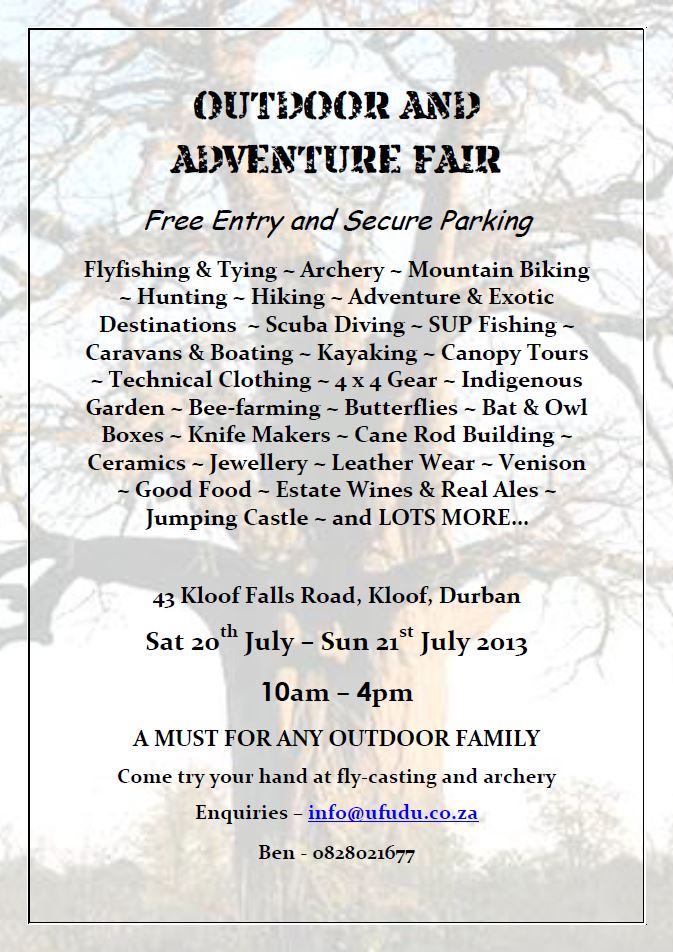
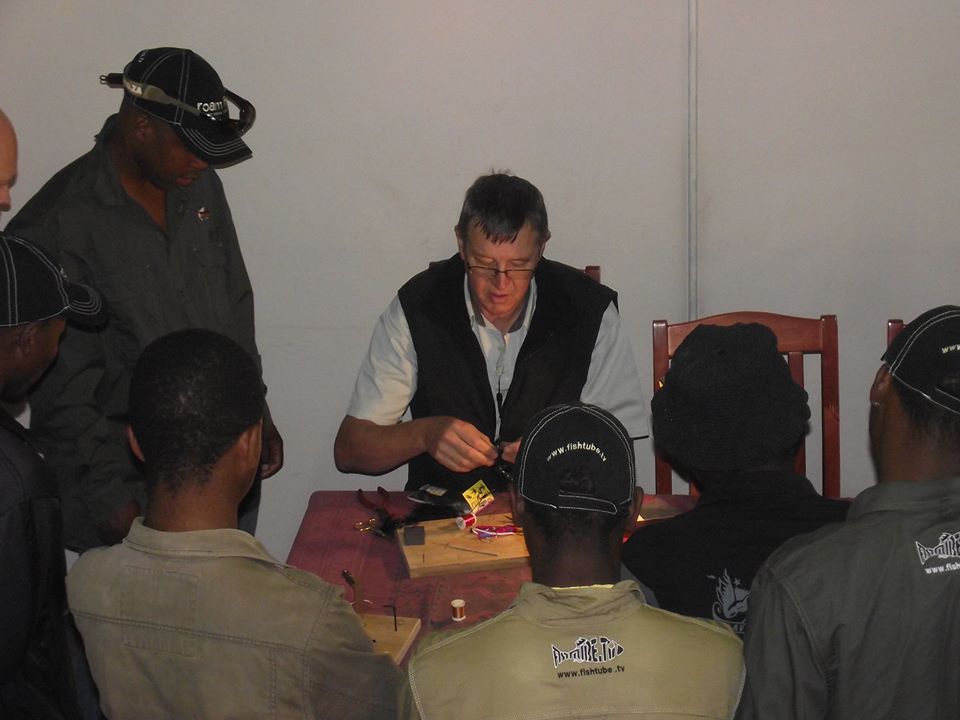
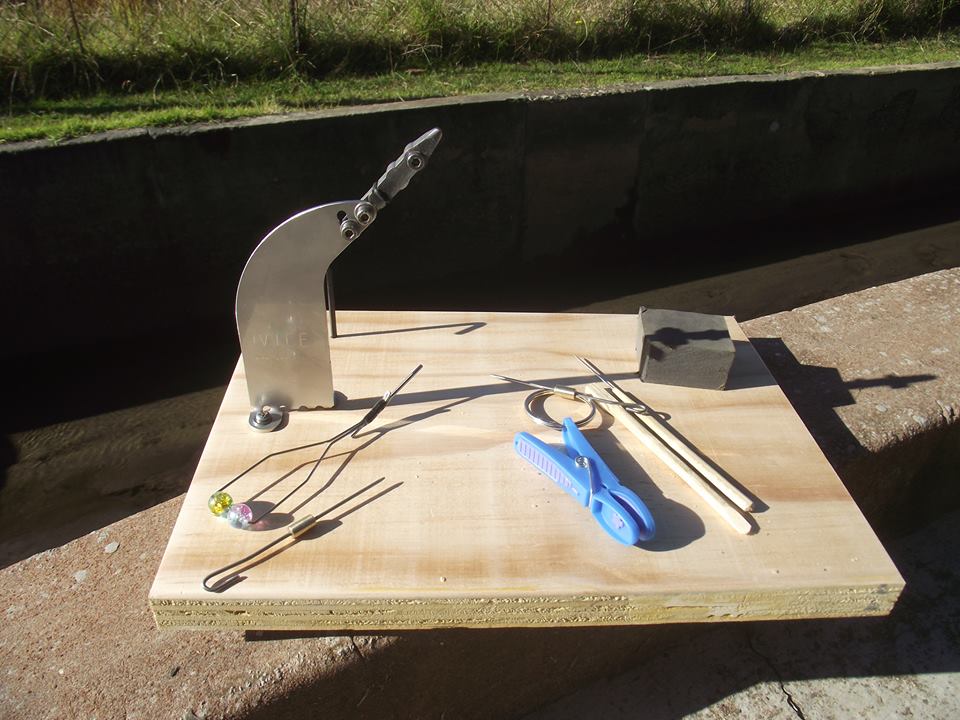
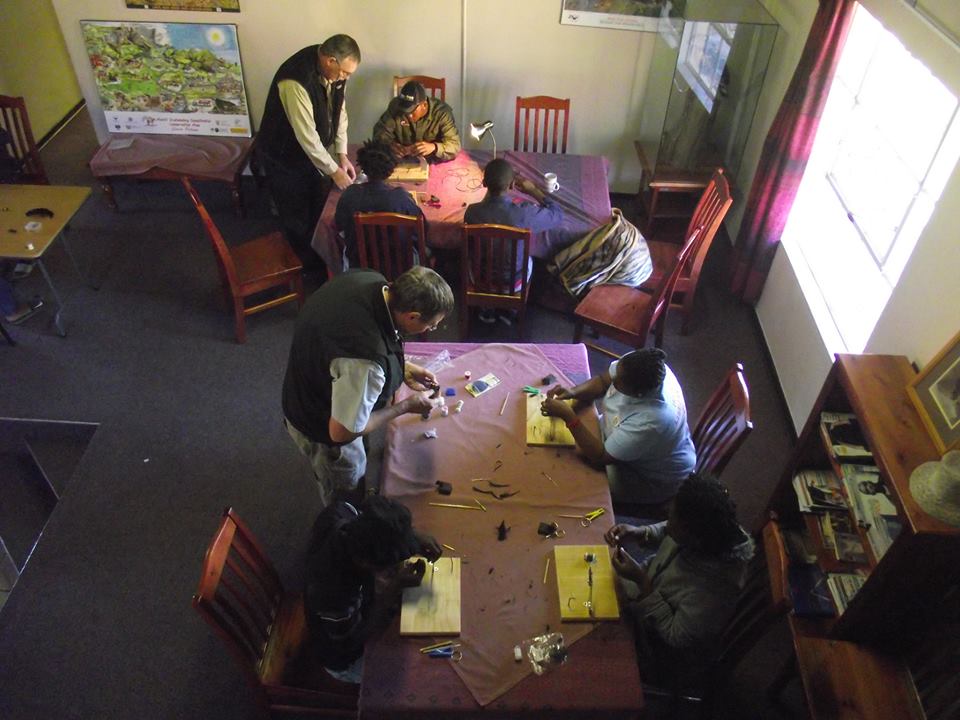
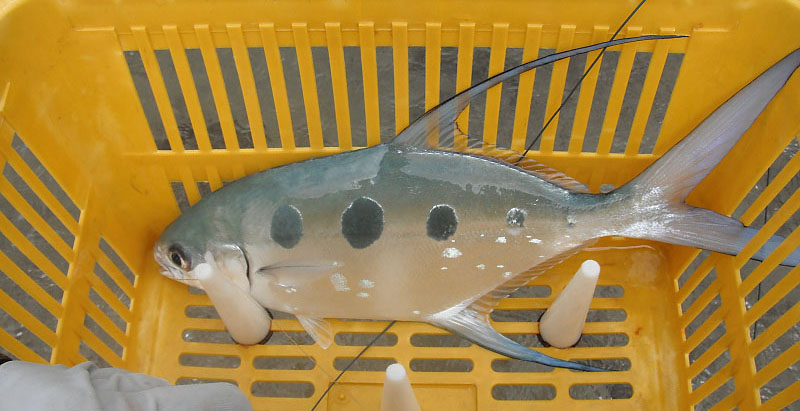
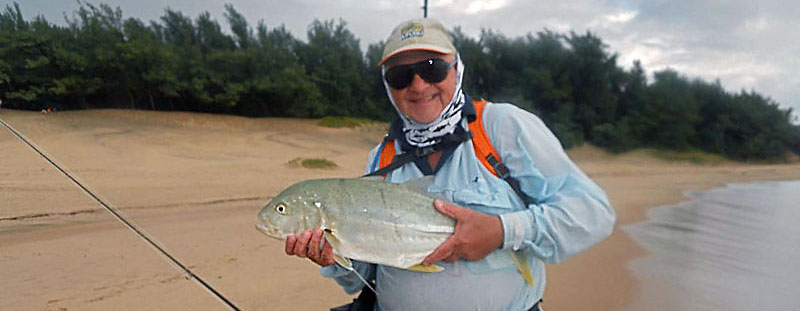
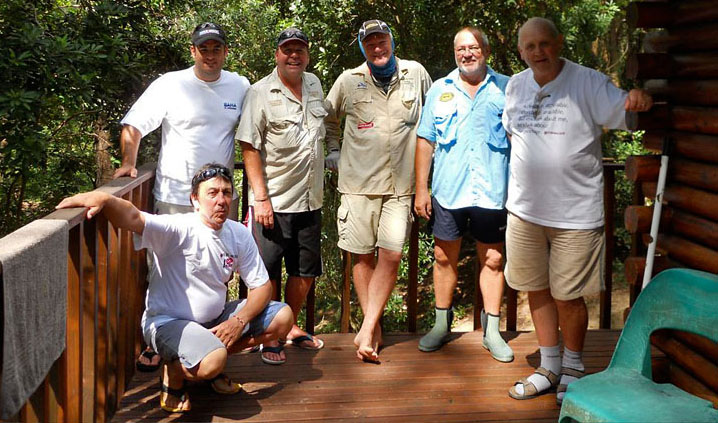
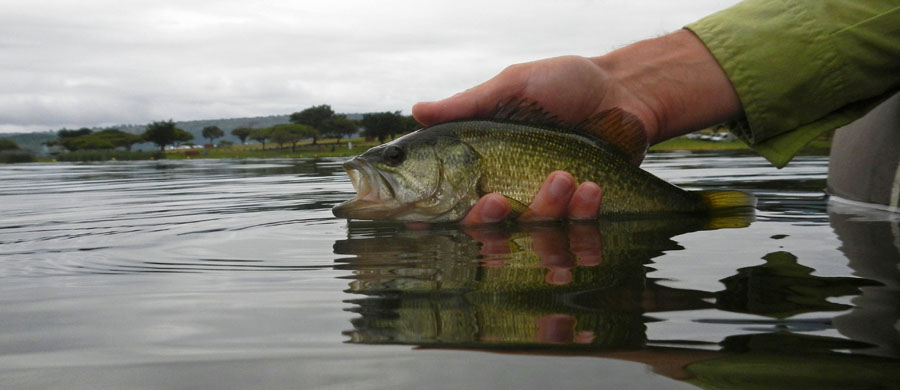
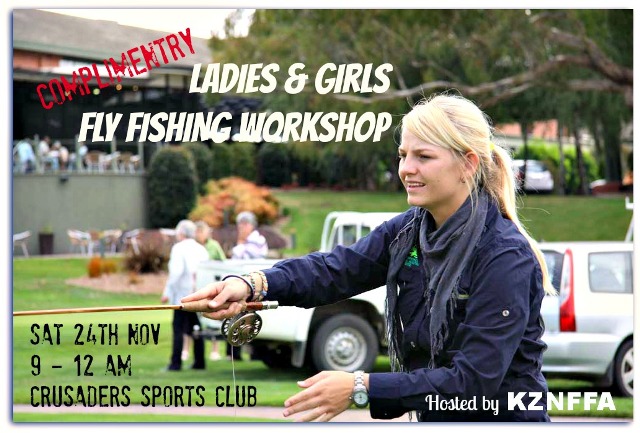
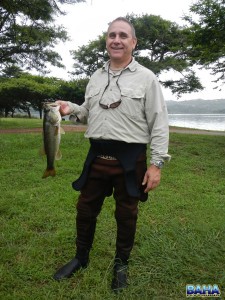
 D5 Creation
D5 Creation